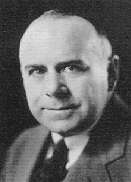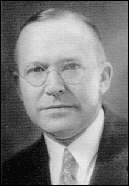
 Thomas
H. MacDonald, who served as the chief of the Bureau of Public Roads (BPR) for 34 years,
is the towering figure of road transportation in the 20th century. He has no equal,
and even today, the United States enjoys his legacy in the mobility that characterizes
our life and the sustained economic strength of our nation.
Thomas
H. MacDonald, who served as the chief of the Bureau of Public Roads (BPR) for 34 years,
is the towering figure of road transportation in the 20th century. He has no equal,
and even today, the United States enjoys his legacy in the mobility that characterizes
our life and the sustained economic strength of our nation. MacDonald combined the Progressive Era ideals of his predecessor, Logan Page, with faith in the federal-state relationship that transformed it into a true partnership. Described as austere, cold, and reserved, MacDonald was always called �The Chief� or Mr. MacDonald - never "Tom" - by even his closest associates. The Chief was born in Leadville, Colo., on July 23, 1881, but he was raised in Montezuma, Iowa, where his father was a grain and lumber dealer. After graduating from Iowa State College with a bachelor�s degree in civil engineering in 1904, he went to work for the college. In 1913, Iowa created a three-man highway commission; he was appointed chief engineer. In that capacity, he worked closely with the American Association of State Highway Officials (AASHO) and Logan Page to fashion and secure support for the Federal Aid Road Act of 1916.

 Herbert Fairbank was a native of Baltimore,
Md., and lived there his entire life, commuting to his job in Washington, D.C. After
graduating from Cornell University with a civil engineering degree in 1910, he spent
a few months with the Bureau of Mines before joining the Office of Public Roads as
a student engineer. Except for a stint as a captain in the U.S. Army during World
War I, he was employed for the rest of his life by the Bureau of Public Roads.
Herbert Fairbank was a native of Baltimore,
Md., and lived there his entire life, commuting to his job in Washington, D.C. After
graduating from Cornell University with a civil engineering degree in 1910, he spent
a few months with the Bureau of Mines before joining the Office of Public Roads as
a student engineer. Except for a stint as a captain in the U.S. Army during World
War I, he was employed for the rest of his life by the Bureau of Public Roads.